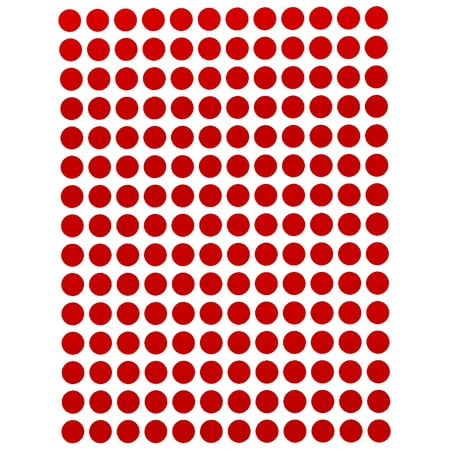‘It’s deceptively simple but surprisingly effective’ – how the ‘Dot and Ditch’ decluttering method kicks decision fatigue to the curb
Stickers aren’t just fun for kids


The “just in case” argument is decluttering’s enemy number one. It can be seen as a cop out excuse to keep an item, rather than face tossing it out. That is where the Dot and Ditch decluttering method comes in.
The system is simple – stick a bright sticker on those ‘maybe’ items, and if after nine months the sticker is still there, get rid of the item.
Here, professional organizers share their tips for getting the most out of this decluttering method, and how to use it for the best results.
The ‘Dot and Ditch’ decluttering method
Originally posted on Instagram by professional home organizer Erica Layne, owner of The Life on Purpose Movement, she calls the Dot and Ditch method the ‘easiest trick to decide what stays (without the mental gymnastics)’, making it the perfect trick to overcome decision fatigue when decluttering.
In the Reel, Erica sticks a big red sticker, much like these round red stickers from Walmart, onto the items she usually keeps ‘just in case’, to avoid ‘circling the same “maybe” items for years.’
You stick the sticker on an item, if it is used within the next 90 days, you take the sticker off. If after the 90 days, the sticker is still there, it's time to ditch your maybe piles. It is a little like the 90/90 decluttering rule mixed with the expiry decluttering method.
A post shared by Erica Layne | Decluttering Coach (@thelifeonpurposemovement)
A photo posted by on
Other professional organizers also love this decluttering tip. Orna Fathers, founder, lead designer, and home organization specialist at Grace This Space Interiors, shares, ‘It’s deceptively simple but surprisingly effective. When someone’s not sure whether to keep or let go of an item, placing a red dot on it becomes a low-pressure way to pause the decision without avoiding it entirely. If 90 days go by and the sticker’s still there, the item has, in effect, “made the decision” for them. It’s a gentle nudge toward clarity – without the guilt that usually comes with decluttering decisions.’
Design expertise in your inbox – from inspiring decorating ideas and beautiful celebrity homes to practical gardening advice and shopping round-ups.
Where the Dot and Ditch method works best

The Dot and Ditch method works perfectly for larger items such as appliances.
As with any decluttering method, the Dot and Ditch decluttering method works better in some places than others when deciding where to start when decluttering.
Orna continues, ‘In my experience, this method works best for items that tend to blur the lines between “maybe” and “meh”, like kitchen gadgets you swore you'd use, décor pieces that don’t quite fit your style anymore or those impulse purchases we all make from time to time.
‘It's especially helpful for larger items that are larger, more expensive, or harder to replace or donate. For example, a bulky juicer collecting dust on the counter guilting you for the fancy healthier person you wish you could be, a trendy accent chair that never quite worked in your space but you still really like or a vintage lamp you bought but never really loved – items that feel too valuable to toss but aren’t earning their keep.
‘That said, I wouldn’t recommend using the red dot method for decluttering sentimental items. Those deserve a bit more emotional processing and conversation. But for everyday clutter and accumulation pieces? It's a wonderfully visual and practical way to cut through indecision.’
Rules for the Dot and Ditch method

The dot method can also work for clothing on hangers.
In order for this method to help you decide what to declutter to work, Orna suggests setting a few ground rules:
- I usually tell clients to keep a list of red-dotted items so nothing gets lost in the shuffle.
- Choose one review day at the end of the 90 days to assess all the items at once – it makes the process feel more intentional.
- Commit to acting on the decision. If the dot’s still there, it’s time to let the item go [we suggest making a note on a wall calendar, from Walmart, or in your digital reminders, to cement your deadline]
- Make it fun! One client of mine made it a game to encourage family to declutter. Every few months, they'd walk through the house together and “collect” all the leftover dots. It turned a daunting task into something lighthearted and even fun.
What to shop

These small stickers come in 15 colors if you do not fancy using the traditional red. With 900 stickers per pack, there is more than enough to tag every 'maybe' item laying around your home.

For lots of small items that are all 'maybe's consider boxing them up and putting a single sticker on the box to help reduce waste.

Keep tabs on all the items you have added a sticker to, where they are, and your deadlines for items to make this approach work for your home.
Meet the experts

Erica is a wife and mom of three, certified life coach, and the bestselling author of The Minimalist Way, available at Amazon. . She focuses her efforts on helping overwhelmed moms declutter and simplify their lives.

Orna is an award winning interior designer and home organization professional. When it comes to organizing and decluttering for clients, Orna chooses which rules to apply and which to ignore based on her client’s needs, values, lifestyles and family dynamics.
Stepping back from active decluttering and trying out this Dot and Ditch method is a great way to overcome a decluttering roadblock, too, helping you take a mental break from decision-making without abandoning the task altogether.

Chiana has been at Homes & Gardens for two years and is our resident 'queen' of non-toxic living. She spends most of her time producing content for the Solved section of the website, helping readers get the most out of their homes through clever decluttering, cleaning, and tidying tips. She was named one of Fixr's top home improvement journalists in 2024.
You must confirm your public display name before commenting
Please logout and then login again, you will then be prompted to enter your display name.